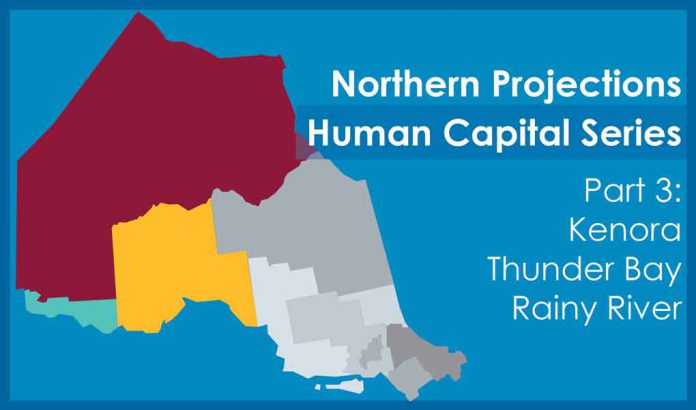THUNDER BAY – BUSINESS – The final reports from the UPDATED Northern Projections: Human Capital Series have been released. These reports explore demographic and labour market trends as well as projections into the future of Northeastern Ontario, specifically in the districts of Kenora, Thunder Bay and Rainy River.
Here are some key recommendations from the reports:
- 1. Continue to invest in the Indigenous population
The projections indicate a need to promote and improve education among Indigenous peoples. For example, 60 per cent of Indigenous men and 57.3 per cent of Indigenous women in the Kenora District are participating in the labour market, and less than half are employed. In the Thunder Bay District, Indigenous people have lower educational levels when comparing to the average for Indigenous people in Ontario. Addressing issues concerning employment and the need to promote and improve education among indigenous peoples, become pertinent for the local labour market and economic growth.
- Foster female, youth and newcomer participation in the labour force
Rainy River district has experienced an upward trend in the net migration in every age group other than 65+. The district should continue to build on this positive momentum, in order to combat the declining labour force and ageing population in the coming years.
On the other hand, Thunder Bay’s population and labour force are shrinking and ageing. The district has seen many people move away, and very few move in. The Kenora district’s population cohort 65 years and over is projected to grow significantly in the coming years. As a result, Thunder Bay and Kenora districts should focus on newcomer attraction in order to restore sustainable ratios of workers to dependents. In addition, the district should develop youth retention strategies that will stem the tide of youth outmigration.
“According to the data men have higher participation and employment rates compared to women in different target groups (total population, Francophones, immigrants, and indigenous population) from 2011 to 2016. This is why encouraging more females to join the labour market will be key to increasing the labour market size and variety in the Thunder Bay District. I’m happy to see that participation and employment rates of women has increased from 2001 to 2016,” says Madge Richardson, Executive Director at Local Employment Planning Council
- Need for infrastructure
As the data has shown, in the Rainy River and Kenora Districts, unemployment rates are the highest in remote areas. Providing accessible education, especially postsecondary education, will be an essential move to expand the labour force. Investments in high speed internet access and other infrastructure like roads, rail, port and airports would not only assure access to the global economy, but also contribute to higher human capital indices for the population as they are more likely to achieve better health and education outcomes







